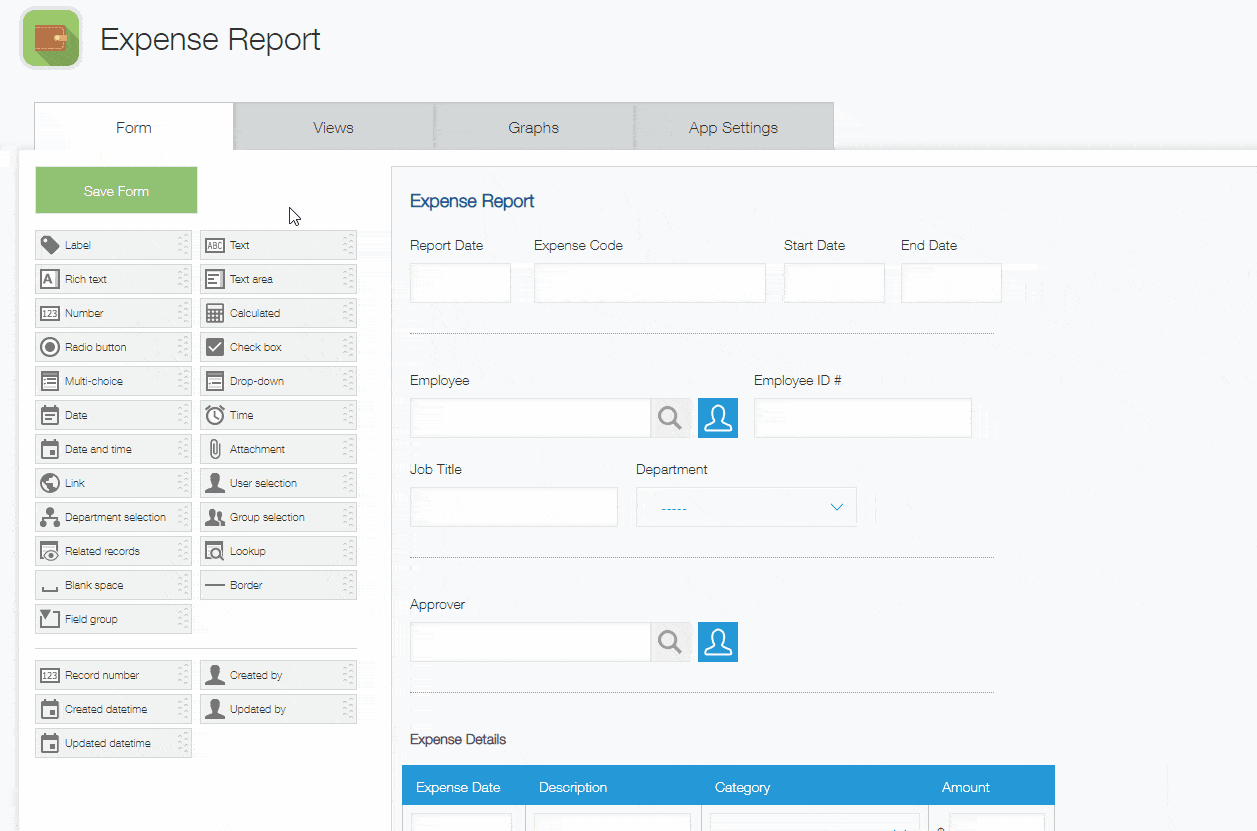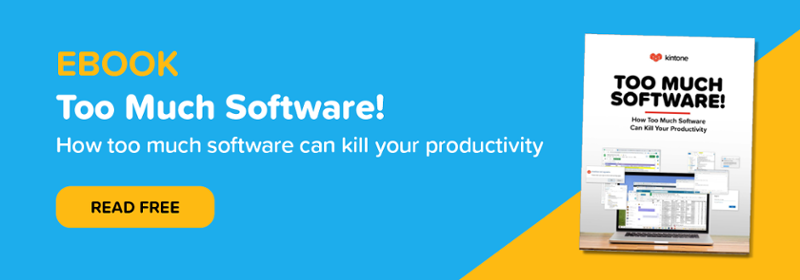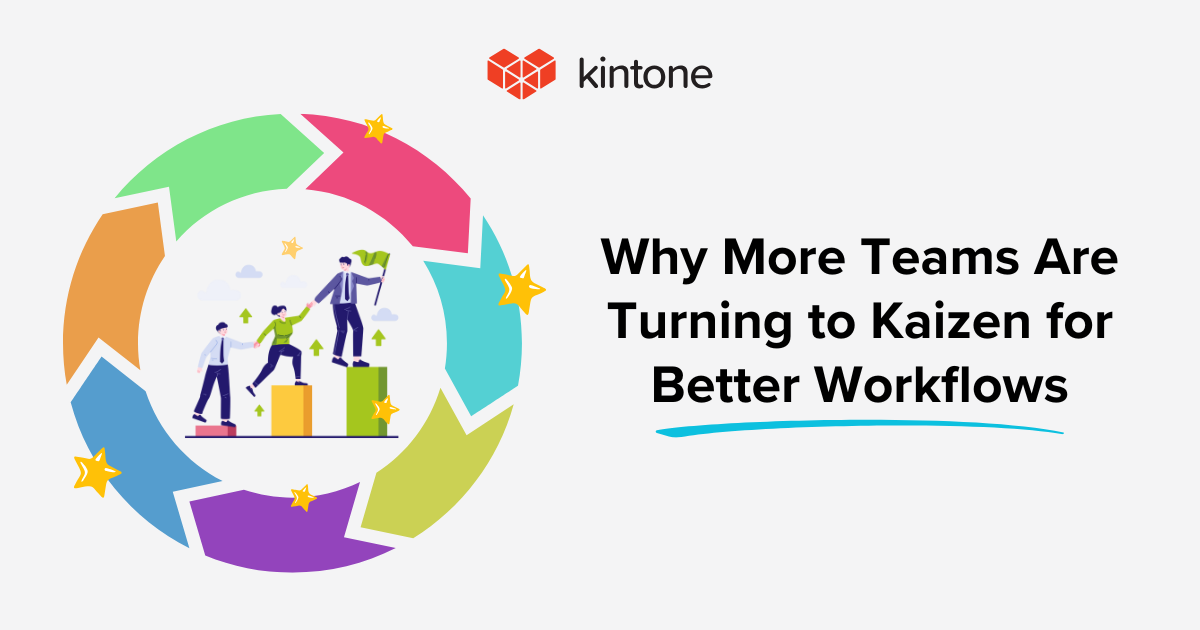So. Much. Business Software.
By any measure, we're living in an increasingly software-defined world. We live, work, and play inside applications, and they take seem to consume more of our time and attention every year. The true personal computer, the smartphone, drives much of the frenzy. We move quickly between apps throughout the day, working across built-in phone tools and downloaded apps. It's about choice and experiences.
When it comes to the software tools that help us work, organizations must strike a balance. While users would prefer choice and experiences, businesses must also optimize for cost and efficacy. But the statistics show that the modern workplace is a state of permanent multitasking. One broad survey found that the average knowledge worker switched between 35 critical applications over 1,100 times a day. That is a lot of time lost to digital wandering, without even considering the impact it has on our ability to focus and do our best work.
An app for every task
We have rushed headfirst into a world where somebody, somewhere, is probably suggesting an app for that. We can do everything from order a pizza to apply for a mortgage right from our device. We have more ways to share and stay in touch, get organized, or entertain ourselves than ever before. Software developers have seized the moment, and the industry is bright and booming.
But for all our time spent inside the applications, are we really more connected? And as we choose unique tools for every workflow, are we driving unnecessary cost and complexity? Those same software developers are anxious to crack the enterprise market, so they're more than happy to reinvent the wheel as many times as they can. And it's ultimately the IT department that pays a heavy price:
- Already difficult integration work takes place across traditional organizational silos and obstacles
- Stakeholders not always invested in maximizing and optimizing specific tool investments
- Unnecessary cost and redundant licensing driven by the above
- Additional risk and compliance concerns to chase down and build controls around
From scarcity to abundance
In the early days of digital transformation, software gaps in enterprise were traditionally workflows or processes that weren't yet added to an application. This made the main challenge stitching together solutions. Today, the enterprise software ecosystem is more abundant than ever. The problem now isn't too little software, but too much.
Ultimately, it's a sign of progress. The ability to buy and consume cloud services and a move towards greater decentralization in general mean that teams or lines of business are often free to select their own tools. It's part of the culture–it's how you 'trust' a group. And lightweight API integration means that you can still, where required, tie into critical shared enterprise services. So, it's easy to see why it seems (and feels) ideal.
But think back to the stats: 35 tools, 1,100 switches a day. If organizations could find ways to bring either of those numbers down significantly:
- What could they accomplish??
- How much stronger would technology's role in real transformation become?
- How much more confident would you be about investing in meaningful innovation?
The struggle is real. Right-sizing software solutions to application needs is tricky. Stakeholders and users have expectations they're always happy to share with you. But you're also operating against substantial compliance and resource constraints. Even as technologists advocate for users, somebody must take the big picture view. Somebody must ask not just which software tool is being selected, but should there be any new tool at all?
Start thinking big
Attempts to multitask lead to a 40% drop in productivity. By the way, fewer than 3% of the total population can successfully parallel process tasks. It's not just inconvenient; it's expensive. Experts say the little delays add up to over $650B lost a year.
|
Consistent workstreams, connected back ends, consolidated management, and control |
Focused, customizable work objects and information flows |
|
Automation, integration, built-in security |
Easy to deploy, consume, scale, and adapt |
The short version: maximizing choice while minimizing complexity. If organizations can achieve both, the exponential gains promised by digital transformation evangelists can be realized. But it requires a different kind of technology thinking.
One technology, a thousand possibilities
The challenge, then, is this: how does one get all their software wants without adding to the growing list of business applications they must jump between throughout their workday?
The initial answer to this problem is customized software. Customized software solves the "maximizing choice" part of the problem by giving us a way to get the customization we want for our specific tasks. It can also solve a higher-level problem by offering a solution that can be many things without being many separate programs. Additionally, centralized custom software eliminates hopping between open tabs in your browser while giving you that customized workflow you need to get a specific department task done.
But most customized solutions are individual solutions that serve only a few specific tasks in very specific ways. A custom software application that gives marketing the ability to track social media tasks rarely also gives sales and customer success the specific solutions they need for their own projects.
Custom software that is designed for many specific instances is possible to make, but it often comes with a toll: it's expensive and slow to get off the ground. It suffers from project scope and is slow to respond to change (you wait on your overloaded IT department or a third-party developer to get around to making the changes and then get feedback from you to make more changes).
But no-code software erases the gap by making it possible to get customize software without depending on developers (in-house or otherwise) to build and maintain the apps.
What are no-code platforms?
“No code” or “no-code platforms” are application development platforms that can be built and customized with zero programming experience. No-code platforms feature intuitive, drag-and-drop interfaces that allow non-coders to quickly build and run business applications. No code and “low code” are often featured together in articles, but refer to platforms with different technical competency requirements.
How do they minimize complexity?
Complexity with regards to software exists in two ways: the number of applications we use and the way in which we depend on others to maintain them.
Centralized custom software solutions resolve the first issue. The second is resolved by no-code platforms, which make the creation and maintenance of custom solutions a non-technical matter.
Using drag-and-drop interfaces, users can design and re-design their custom software solutions however they want without relying on their IT department or a third-party developer. No-code solutions give users the freedom to create exactly what they need without putting company data or communications at risk security-wise.
What does it look like?

The image above shows how a person can use a no-code platform (in this case, Kintone) to build custom database apps and workflows tracking all the information they want.
This is what makes no-code solutions so powerful: anyone can get the customization they want in one single platform, without relying on more tools, more developers, or an internal IT department to maintain/change it when necessary.
They offer the centralization and customization without the additional technical burdens of cost and time.
Want to learn more?
If you want to learn more about how Kintone's no-code platform can handle all your tasks while reducing the number of software platforms you use, watch our demo playlist to learn more.
P.S. Are more business apps really what we need to do our best work together? Download this eBook to find out why and how to shift your software mindset, to simplify, not multiply.
About the Author











